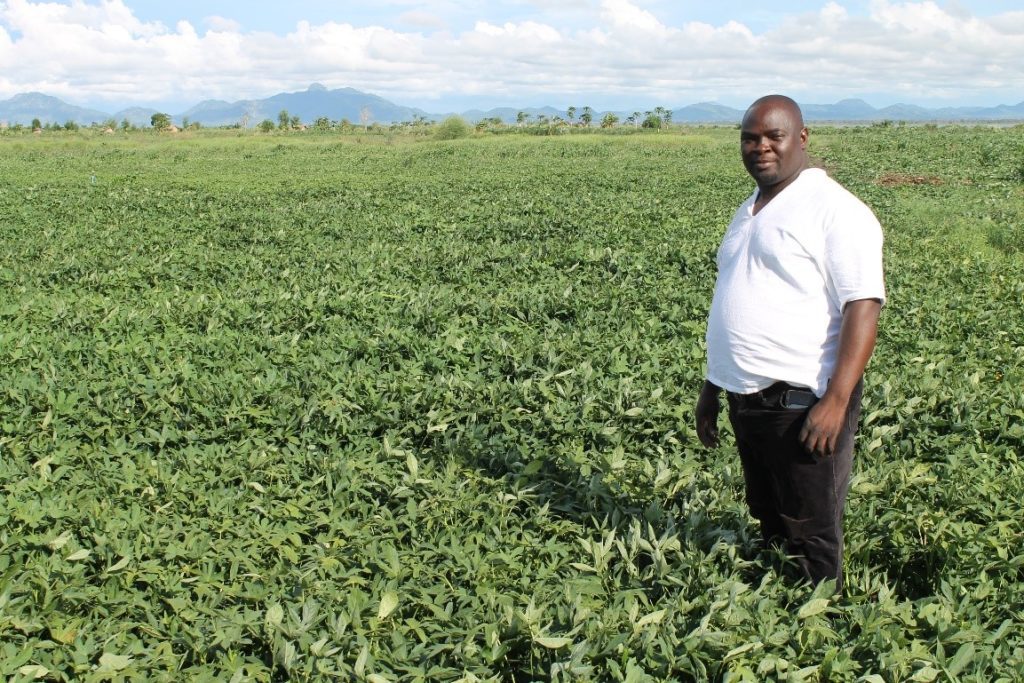 An estimated 86 percent of the population of the developing world makes their living from agriculture. An increase in pests and disease and the unpredictable rainfall patterns wrought by climate change will disproportionately impact the world’s poor.
An estimated 86 percent of the population of the developing world makes their living from agriculture. An increase in pests and disease and the unpredictable rainfall patterns wrought by climate change will disproportionately impact the world’s poor.
International Potato Center (CIP) principal scientist and 2016 World Food Prize recipient, Dr. Jan Low, was at COP 23 in Bonn from November 6th through the 8th. Over a series of interviews and panel discussions, she shared insights on how root and tuber crops can mitigate the impact of climate change. The following are highlights from these talks.
Agriculture and climate change
Almost 70 percent of the water used, goes to agriculture. I think that is a particular area where we have to be part of the solution. A lot of work goes into saying how we can minimize water use without sacrificing productivity. People still need to eat.
To adapt to climate-change we need to: produce more adapted crops faster at times under tougher environments; produce more with less water as we recognize that landholding size in Africa and Asia is declining significantly over time per capita.
Climate and the changing climate drastically affects agriculture and our ability to produce food. As we develop and react to climate change, we must remember that nutrition is a key component. In general, at CIP, we are breeding for early maturity. The seasons are getting shorter. We now have 90-day varieties of both potato and sweetpotato, and with potato, we are on the verge of having some high-yielding 70-day varieties. This means we can build potato and sweetpotato into rotation with cereals and get more food on the table. (Early maturity) also means fewer resources (are required) because they are growing for shorter periods of time.
Climate change and plant breeding
Breeding is a numbers game. We start with large numbers of potential varieties and have to work down over the years to get to the few that meet all the various conditions and traits a crop needs to be successful in different agri-ecologies. We need cheaper and faster tools to assess progress, and we need a better understanding of the crop. There has been heavy investment over the years. We now, for example, have a full genome of many of the staple foods and are working on the genome discovery on the remaining ones. It also means we have to do a lot more work on the higher end of understanding the physiology and biochemistry behind the different crops.
We have aimed through our conventional breeding programs to address vitamin A deficiency problems with enriched beta-carotene sweetpotato and (anemia with) iron and zinc in potato and iron in orange-fleshed sweetpotato. Of course, all of these need to have good taste and market demand or they will not be accepted by farmers.
Breeding for smallholder farmers
When we breed for small farms, we are breeding for yield and pest resistance. (Our focus on virus resistance) enables farmers to retain their planting material longer without yield decline. With pest, we want to see a decline in pesticide use. We conduct our trials without fertilizer. Our focus is really on drought and heat tolerance in these crops.
We have taken and developed an accelerated breeding scheme, which means having more sites earlier in the breeding process. This has enabled us to reduce the cycle from crossing parents to getting new varieties from eight to four years. We had 15 drought tolerant varieties released in 2011 and seven more in 2016.
Challenges to scaling up
The major challenge of scaling up a vegetatively propagated crop is that you have to have a decentralized system of multiplication because the vines that are used to plant the sweetpotato are perishable. You don’t want to be transporting them over very, very long distances. It takes resources to identify and train farmers on producing quality planting material. That is our major challenge. Now that we have good varieties the challenge is getting them out and reaching all farmers that would like to have access to these varieties.
Read more about the official COP23 side event where Jan participated: THE LAND AND WATER ADVANTAGE UNDER CLIMATE CHANGE
Watch the taped COP23 side event The land and water advantage
